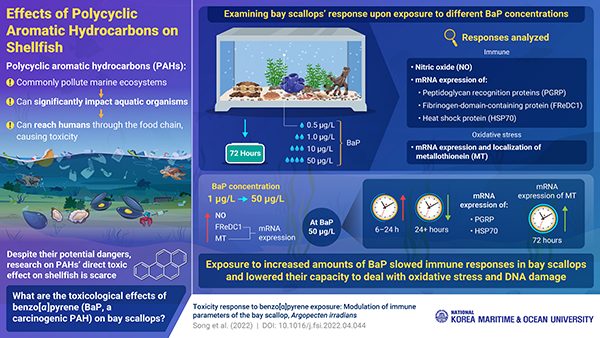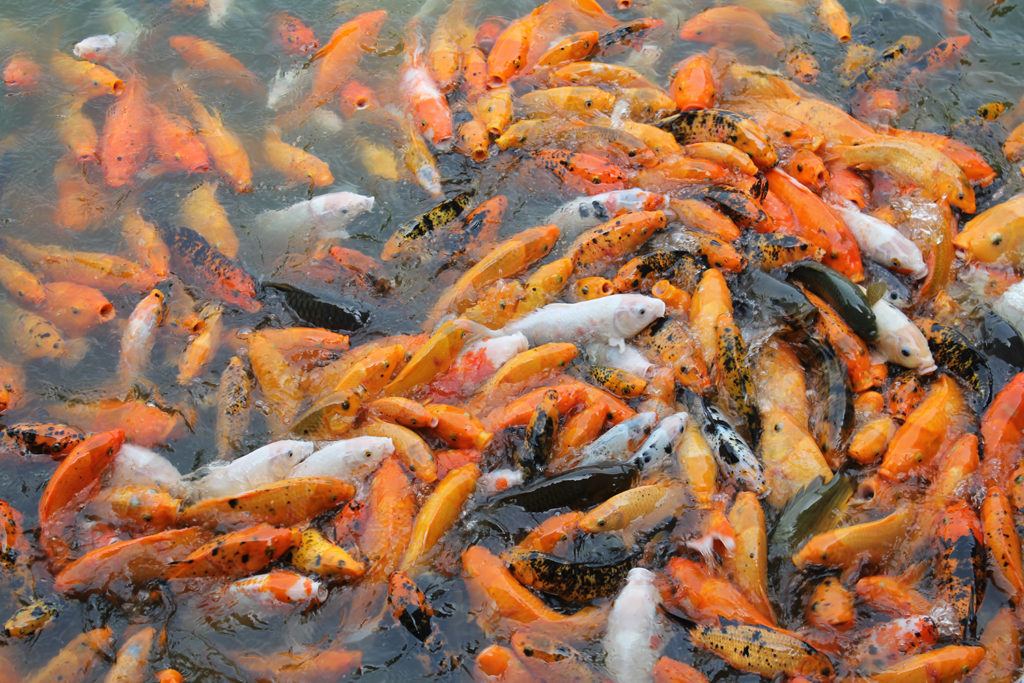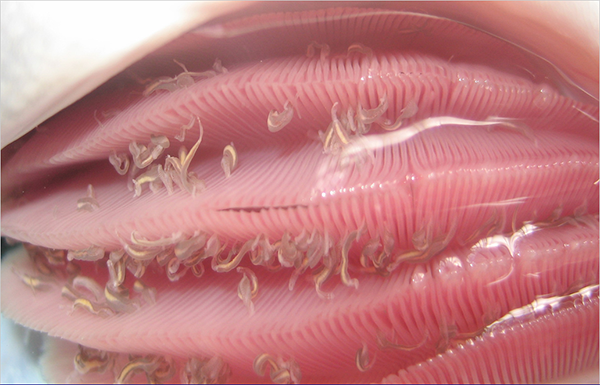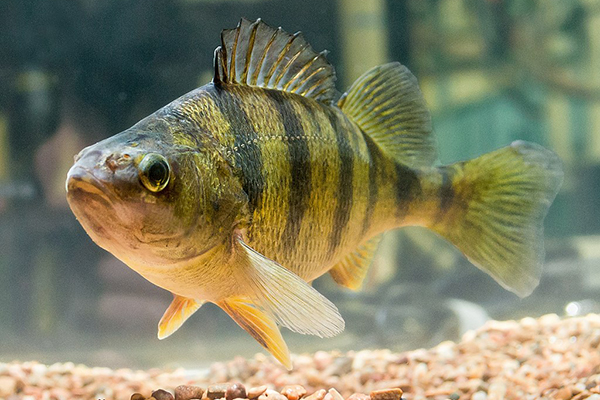Study reveals the toxic effects of a common aquatic pollutant, the PAH Benzo[α]pyrene (BaP), on bay scallops

A new study from South Korea has found that higher levels of benzo[α]pyrene (BaP), a carcinogenic polycyclic aromatic hydrocarbon, can significantly dampen the immune and oxidative stress response of bay scallops.
Rapid industrialization of coastal areas and a rise in sea transport continue to cause pollutants to be released into marine ecosystems. Polycyclic aromatic hydrocarbons (PAHs) are one of the most common pollutants released into the sea. They negatively affect aquatic ecosystems, but their impact on marine animals has not been sufficiently explored.
For example, PAHs disrupt a variety of biological systems in marine creatures, including energy metabolism, growth, genetics and reproduction. Exposure to these compounds causes toxicity not only in marine organisms but also in humans who consume these organisms. Although the immunotoxicity of PAHs has been extensively studied in mammals and fish, its influence on shellfish has not been adequately investigated.
To fill this knowledge gap, a group of researchers from South Korea evaluated the toxicological effects of PAHs on bay scallops. They selected a particular polycyclic aromatic hydrocarbon (BaP), which is a known carcinogen.
“The effect of BaP on scallops was investigated by observing various immune- and oxidative stress-related parameters,” said Dr. Cheol Young Choi, professor at Korea Maritime and Ocean University’s Division of Marine Bioscience.
The researchers exposed the scallops to seawater containing four different concentrations of BaP (0.5, 1.0, 10, and 50 μg/L) for 72 hours, and then measured five different parameters in these scallops: the nitric oxide (NO) levels in their hemolymph, and the mRNA expression of peptidoglycan recognition proteins (PGRP), fibrinogen-domain-containing protein (FReDC1), metallothionein (MT) and heat shock protein (HSP) 70.
“While NO levels and the expression of PGRP, FReDC1 and HSP70 indicate the scallops’ immune response to BaP toxicity, the expression of MT is seen as a stress response in these organisms,” wrote the research team in a press release.
The study, which was recently published in Fish and Shellfish Immunology, found that except for the BaP 0.5 μg/L group, NO and FReDC1 and MT mRNA expression rose considerably with time in each BaP group. The expression of PGRP and HSP70 mRNA in the BaP 50 μg/L group rose for 6–24 hours before declining. Moreover, at 72 hours, the BaP 50 μg/L group had greater MT mRNA expression than the control group.
“All the parameters increased significantly over time at higher BaP concentrations,” said Choi.
The researchers also used a special in situ hybridization technique to confirm the location of MT expression in the cytoplasm of certain cells in these scallops – confirming that these organisms do, indeed, overexpress MT in the presence of PAHs.
From these observations, the researchers concluded that the BaP dampens the immune response of scallops and decreases their capacity to respond to oxidative stress, infection, inflammation and tissue damage.
“This study paves the way to develop new techniques to control the release of BaP into water bodies and its transfer to humans through the food chain,” said Choi.
Follow the Advocate on Twitter @GSA_Advocate
Now that you've reached the end of the article ...
… please consider supporting GSA’s mission to advance responsible seafood practices through education, advocacy and third-party assurances. The Advocate aims to document the evolution of responsible seafood practices and share the expansive knowledge of our vast network of contributors.
By becoming a Global Seafood Alliance member, you’re ensuring that all of the pre-competitive work we do through member benefits, resources and events can continue. Individual membership costs just $50 a year.
Not a GSA member? Join us.
Author
-
Responsible Seafood Advocate
[103,114,111,46,100,111,111,102,97,101,115,108,97,98,111,108,103,64,114,111,116,105,100,101]
Tagged With
Related Posts

Responsibility
Hydrogen sulfide toxic, but manageable
Hydrogen sulfide, which can form in pond bottom sediment, is toxic to aquatic animals because it interferes with reoxidation of cytochrome a3 in respiration.

Responsibility
Toxicity of chemical substances in aquaculture
Prof. Boyd discusses toxicity of chemical substances in aquaculture systems and the difficulties in establishing safe concentration limits for toxic metabolites.

Health & Welfare
No fluke: Cawthron Institute’s new web tool could help fish farmers tackle parasitic infection
Cawthron Institute has developed “BeNeZe” – a new web tool to help fish farmers manage parasitic infection in Kingfish and Amberjacks

Health & Welfare
Yellow perch can expel microplastics from their bodies – but with negative consequences
A study found that yellow perch can expel microplastics from their digestive systems, but the act seemed to cause stress.



